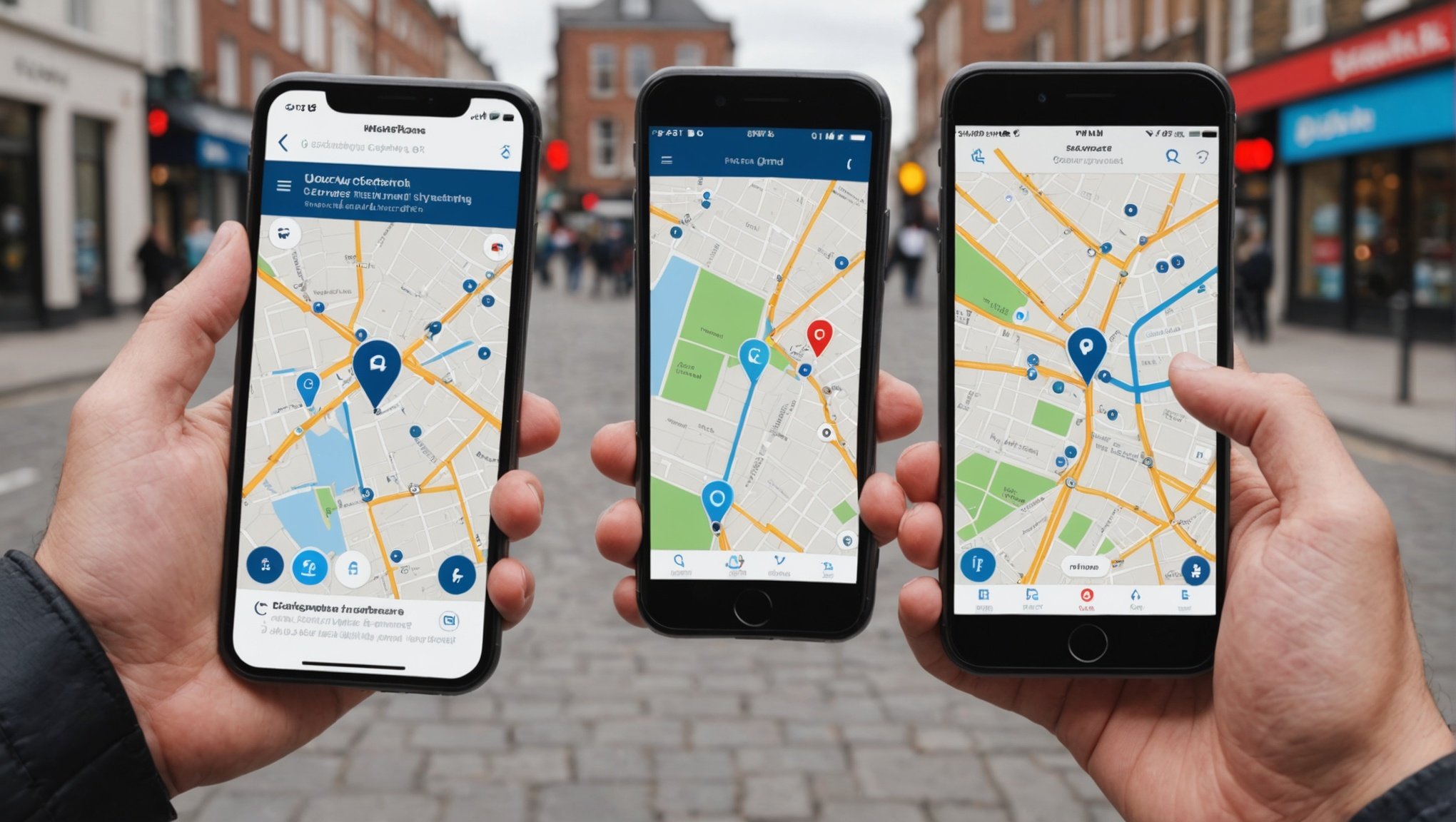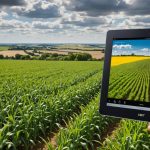Geofencing offers local businesses in the UK a powerful tool to enhance marketing strategies and engage with customers in real time. By creating virtual boundaries, businesses can send tailored messages and offers to potential customers within a specific area. This targeted approach not only increases foot traffic but also boosts customer loyalty. Discover effective techniques and insights to leverage geofencing, ensuring your marketing efforts resonate with local audiences and drive business growth. Embrace this innovative technology to stay competitive and connect with customers like never before.
Understanding Geofencing Technology
Geofencing is a cutting-edge technology that creates a virtual perimeter around a specific geographical area, enabling businesses to engage in location-based marketing. It operates by using GPS, RFID, Wi-Fi, or cellular data to define geographical boundaries. When a mobile device enters or exits this predefined area, it triggers a response, such as sending a promotional message or alert.
Topic to read : Unlocking Shipment Transparency: Leveraging Blockchain Technology in UK Logistics
Unlike traditional marketing methods, which often rely on broad, untargeted strategies, geofencing allows for precise targeting based on a user's physical location. This precision enhances marketing efforts by delivering relevant content to potential customers at the right place and time, increasing engagement and conversion rates.
The backbone of geofencing technology is geolocation, which leverages GPS and mobile technology to pinpoint a device's location accurately. GPS provides the necessary data to establish the virtual boundaries, while mobile technology ensures that devices within these boundaries can receive timely notifications or advertisements. This synergy between GPS and mobile technology is crucial for the seamless operation of geofencing, making it a powerful tool for businesses aiming to harness the potential of location-based marketing.
In the same genre : Transforming Member Experience: Innovative Ways UK Fitness Centers Can Leverage Smart Technology
Benefits of Geofencing for Local Businesses
Geofencing offers numerous advantages for local businesses, particularly in the realm of customer engagement. By enabling targeted advertising, businesses can enhance the customer experience through personalized offers. For instance, when a potential customer enters the geofenced area, they might receive a tailored discount or promotion directly on their mobile device. This not only captures attention but also encourages immediate action.
Moreover, geofencing can significantly increase foot traffic and boost sales conversions. By targeting individuals who are already in proximity to the store, businesses can allure them with timely offers, prompting visits and purchases. This local marketing benefit is particularly valuable for brick-and-mortar stores looking to compete with online retailers.
Real-time engagement is another critical benefit. Geofencing allows businesses to communicate with potential customers instantly. Whether it's notifying them about a flash sale or a special event, the ability to reach out in real-time ensures that the message is relevant and timely. This immediacy fosters a stronger connection with the audience, enhancing overall customer engagement and loyalty. Thus, geofencing stands out as a powerful tool for local businesses aiming to leverage targeted advertising effectively.
Practical Applications of Geofencing in the UK
Geofencing technology is revolutionising how businesses in the UK engage with their customers. Several case studies highlight its effectiveness. For instance, a prominent UK retailer successfully used geofencing to boost foot traffic by sending personalised offers to customers within a specific radius of their stores. This local business strategy not only increased in-store visits but also enhanced customer loyalty.
Geofencing applications extend beyond retail. The hospitality industry, for example, uses geofencing to offer exclusive deals to nearby tourists, enhancing their travel experience. Similarly, the real estate sector employs geofencing to alert potential buyers about open houses when they're in the vicinity, making property hunting more efficient.
Innovative uses of geofencing are emerging across various industries. In healthcare, it aids in patient monitoring by sending alerts when patients enter or leave designated areas, ensuring their safety. The transportation sector benefits by optimising fleet management through real-time tracking, improving operational efficiency.
These examples demonstrate that geofencing applications are diverse and impactful. By implementing local business strategies that incorporate geofencing, UK businesses can achieve significant competitive advantages, fostering deeper connections with their target audience.
Step-by-Step Guide to Implementing Geofencing
Implementing geofencing as a part of your marketing strategy requires a structured approach to ensure effectiveness. The first step is to identify your target audience and the geographic areas that are most relevant to your business. Understanding where your potential customers are located and their behaviour patterns is crucial for effective geofencing implementation.
Once you have pinpointed your target areas, the next step is to choose the right geofencing platform and tools. Various platforms offer different features, so it's important to select one that aligns with your business goals and technical capabilities. Consider factors such as ease of use, integration with existing systems, and the ability to deliver customized notifications.
After selecting a platform, you can proceed to set up and customize your geofencing zones. This involves defining the virtual boundaries where your marketing messages will be triggered. Customization is key here; ensure that your zones are neither too broad nor too narrow to effectively reach your audience. Tailor your notifications to be relevant and engaging, enhancing the overall customer experience. By following these steps, businesses can effectively integrate geofencing into their marketing strategy, maximizing engagement and conversion rates.
Best Practices for Effective Geofencing Campaigns
Achieving success with geofencing campaigns hinges on several key practices. Crafting compelling messages and offers is paramount. To captivate your audience, ensure that notifications are not only relevant but also enticing. A well-crafted message that aligns with the interests and needs of your target audience can significantly boost engagement.
Timing and frequency of notifications play a crucial role in campaign effectiveness. Bombarding users with too many alerts can lead to notification fatigue, whereas too few may result in missed opportunities. Striking the right balance is essential; consider the user's daily routine and preferences to determine optimal timing.
A/B testing is an invaluable tool for optimizing campaign performance. By experimenting with different message formats, timings, and offers, businesses can identify what resonates best with their audience. This iterative process allows for continuous improvement, ensuring that campaigns remain effective and aligned with user expectations.
Incorporating these geofencing best practices into your strategy can enhance campaign outcomes. By focusing on crafting compelling messages, optimizing the timing and frequency of notifications, and leveraging A/B testing, businesses can create more impactful and engaging geofencing campaigns. This approach not only boosts engagement but also drives higher conversion rates.
Tools and Software for Geofencing
Selecting the right geofencing tools is crucial for businesses looking to harness this technology effectively. In the UK, several software solutions are popular for their robust features and user-friendly interfaces. Some of the leading platforms include Blueshift, Radar, and PlotProjects, each offering unique capabilities tailored to different business needs.
When choosing a software solution, consider criteria such as ease of integration with existing systems, scalability, and the level of technical support provided. The ability to customise geofencing zones and send targeted notifications is also essential. Additionally, assess the platform's data analytics capabilities to ensure you can track and measure the success of your campaigns.
Comparing features and pricing among various geofencing platforms can help businesses make informed decisions. For instance, Blueshift offers advanced segmentation and personalisation features, while Radar is known for its real-time location tracking. PlotProjects provides cost-effective solutions for smaller businesses with basic geofencing needs.
Ultimately, the choice of geofencing tools should align with your business objectives and budget. By carefully evaluating these factors, businesses can select the most suitable software solutions to enhance their location-based marketing efforts.
Measuring the Effectiveness of Geofencing
Understanding the success of your geofencing campaigns requires careful attention to specific metrics. Key performance indicators (KPIs) such as engagement rates, foot traffic increase, and conversion rates are crucial. These metrics provide insight into how well your campaign resonates with the target audience and whether it effectively drives desired actions.
To accurately measure ROI, businesses can utilise various tools designed for campaign analysis. Platforms like Google Analytics and other geofencing-specific software offer features that track user interactions, helping businesses assess the impact of their geofencing efforts. These tools enable the collection of data on customer behavior, such as the duration of their stay within a geofenced area and the actions taken post-interaction.
Analyzing customer behavior is essential for refining and improving future campaigns. By examining how customers respond after receiving a geofenced notification, businesses can identify patterns and preferences, allowing for more tailored and effective marketing strategies. This analysis not only aids in understanding the immediate effects of a campaign but also helps in predicting long-term customer engagement and loyalty, thereby enhancing overall campaign effectiveness.
Challenges and Considerations in Geofencing
Implementing geofencing comes with its own set of challenges and considerations. Foremost are the privacy concerns that arise due to the collection and use of location data. In the UK, businesses must comply with strict regulations such as the General Data Protection Regulation (GDPR), which mandates explicit user consent before collecting personal data. Ensuring transparency in data usage and providing clear privacy policies can help mitigate these concerns.
Technical challenges also pose significant hurdles. Setting up geofencing requires precise calibration of geofencing zones to avoid overlaps and ensure accurate targeting. This involves integrating various technologies like GPS and Wi-Fi, which can be complex and resource-intensive. Businesses may face issues with signal accuracy and device compatibility, impacting the effectiveness of geofencing campaigns.
To address these implementation issues, businesses can adopt several strategies. Investing in robust geofencing software that offers comprehensive support and user-friendly interfaces can simplify the setup process. Additionally, conducting thorough testing and regular maintenance can help identify and resolve technical glitches promptly. By proactively addressing these challenges, businesses can leverage geofencing effectively while maintaining compliance and ensuring user trust.
Future Trends in Geofencing for Local Marketing
As technology continues to evolve, geofencing trends are set to transform the future of marketing. Emerging technologies such as 5G and the Internet of Things (IoT) are poised to enhance geofencing capabilities. These innovations promise faster data transmission and improved accuracy, leading to more precise targeting and real-time engagement.
Predictions for the future of marketing suggest a shift towards more personalised and immersive experiences. Augmented reality (AR) could play a significant role, allowing businesses to create interactive promotions that engage customers in novel ways. This integration of AR with geofencing can elevate customer experiences, offering tailored content based on precise locations.
To stay ahead of the curve, businesses must embrace these technology innovations. Keeping abreast of technological advancements and adapting strategies accordingly will be crucial. Investing in robust geofencing platforms that incorporate these emerging technologies can provide a competitive edge. Additionally, fostering a culture of innovation within the organisation can help businesses remain agile and responsive to changing market dynamics.
In conclusion, the future of geofencing in local marketing is bright, with numerous opportunities for businesses willing to leverage new technologies and trends.
Conclusion and Key Takeaways
Incorporating geofencing into your marketing strategy offers numerous advantages. By enabling precise location-based marketing, businesses can significantly enhance customer engagement and conversion rates. Throughout this article, we've explored various strategies and benefits, from boosting foot traffic to personalising customer interactions with targeted advertising.
Businesses are encouraged to embrace geofencing technology, as it provides a competitive edge in today's digital landscape. The ability to deliver timely and relevant messages to potential customers is invaluable, especially for local businesses seeking to increase visibility and customer loyalty. By leveraging geofencing, businesses can create more impactful campaigns that resonate with their target audience.
As geofencing technology continues to evolve, staying informed about ongoing developments is crucial. Emerging trends, such as the integration of 5G and IoT, promise to further enhance geofencing capabilities, enabling even more precise targeting and real-time engagement. These advancements open new opportunities for businesses to innovate and refine their marketing strategies.
In summary, adopting geofencing can transform how businesses connect with their audience. By understanding and implementing the strategies discussed, businesses can harness the full potential of geofencing, driving growth and success in an increasingly competitive market.















